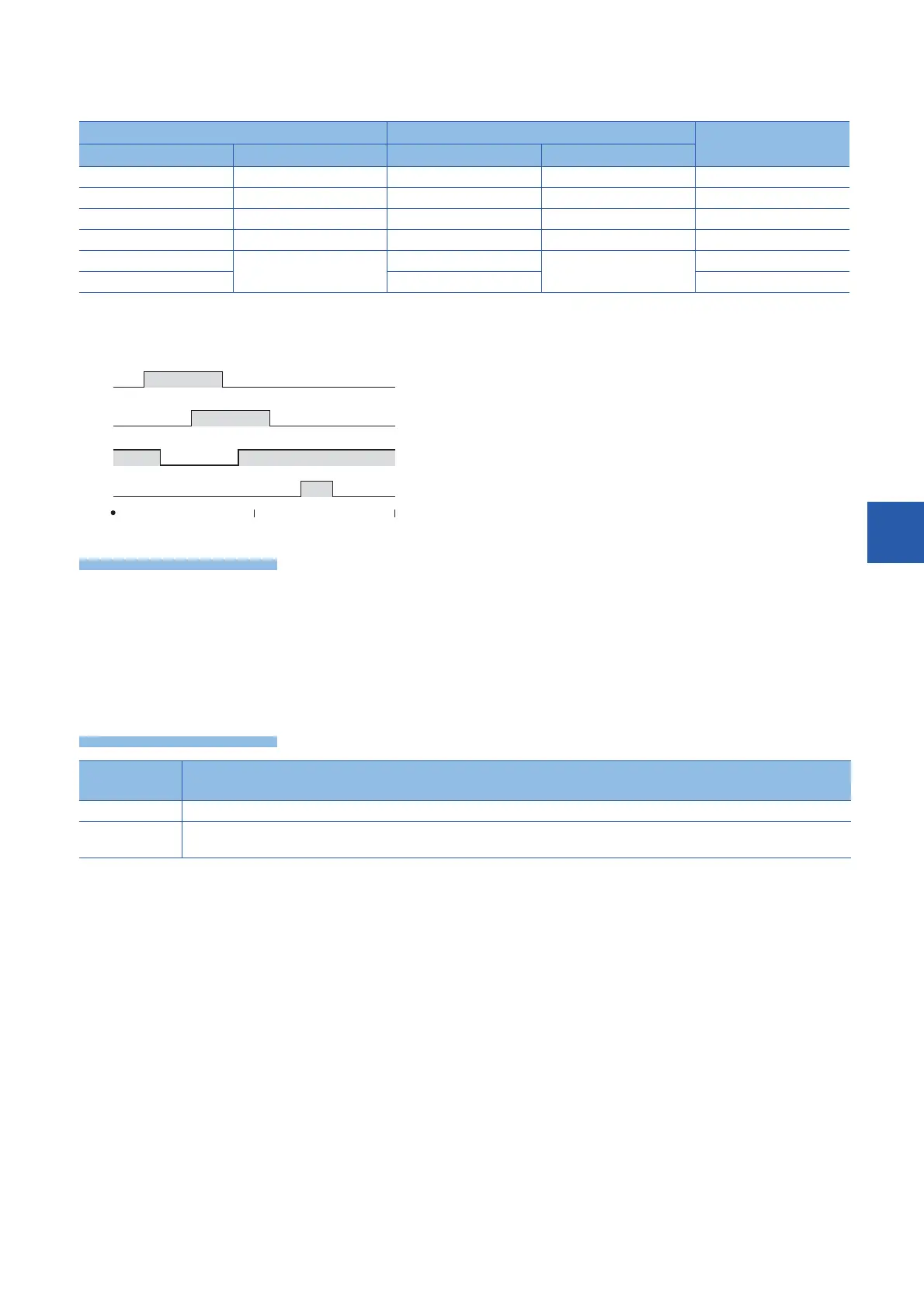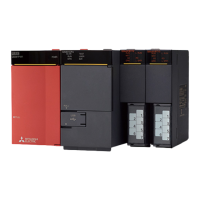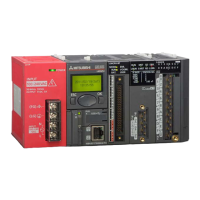7 APPLICATION INSTRUCTION
7.15 Drum sequence
541
7
• Write the following data to (s1), (s1)+1 to (s1)+4(n)-2, and (s1)+4(n)-1 in advance by a transfer instruction: For example,
store 32-bit rising point data in even-numbered devices and 32-bit falling point data in odd-numbered devices.
• The following figure shows the output patterns for device points (n) starting from (d) when the command input is set to on.
Each rising point/falling point can be changed by overwriting the data in (s1) to (s1)+2(n)-1.
• The DABSD instruction can specify a high-speed counter. When the high-speed counter is specified, the output pattern
contains response delay caused by the scan cycle with regard to the current value of a counter.
• When specifying the nibble of a bit device to (s1), specify a multiple of 16 (0, 16, 32, 64 ...) as a device number and always
specify K8 for the number of digits.
• The value of (n) determines the number of target outputs (1 (n) 64).
• Even if the command input is set to OFF, the ON/OFF status of outputs does not change.
Rising point Falling point Target output
Data value (example) Data value (example)
(s1)+1, (s1) 40 (s1)+3, (s1)+2 140 (d)
(s1)+5, (s1)+4 100 (s1)+7, (s1)+6 200 (d)+1
(s1)+9, (s1)+8 160 (s1)+11, (s1)+10 60 (d)+2
(s1)+13, (s1)+12 240 (s1)+15, (s1)+14 280 (d)+3
(s1)+4(n)-3, (s1)+4(n)-4 (s1)+4(n)-1, (s1)+4(n)-2 (d)+n-1
Error code
(SD0/SD8067)
Description
2820 The number of device points specified by (s1) or (d) is insufficient.
3405 The value specified by (n) is outside the following range.
1 to 64
40 140
100 200
160
240 280
180
360
60
0
(d)+3
(d)+2
(d)+1
(d)

